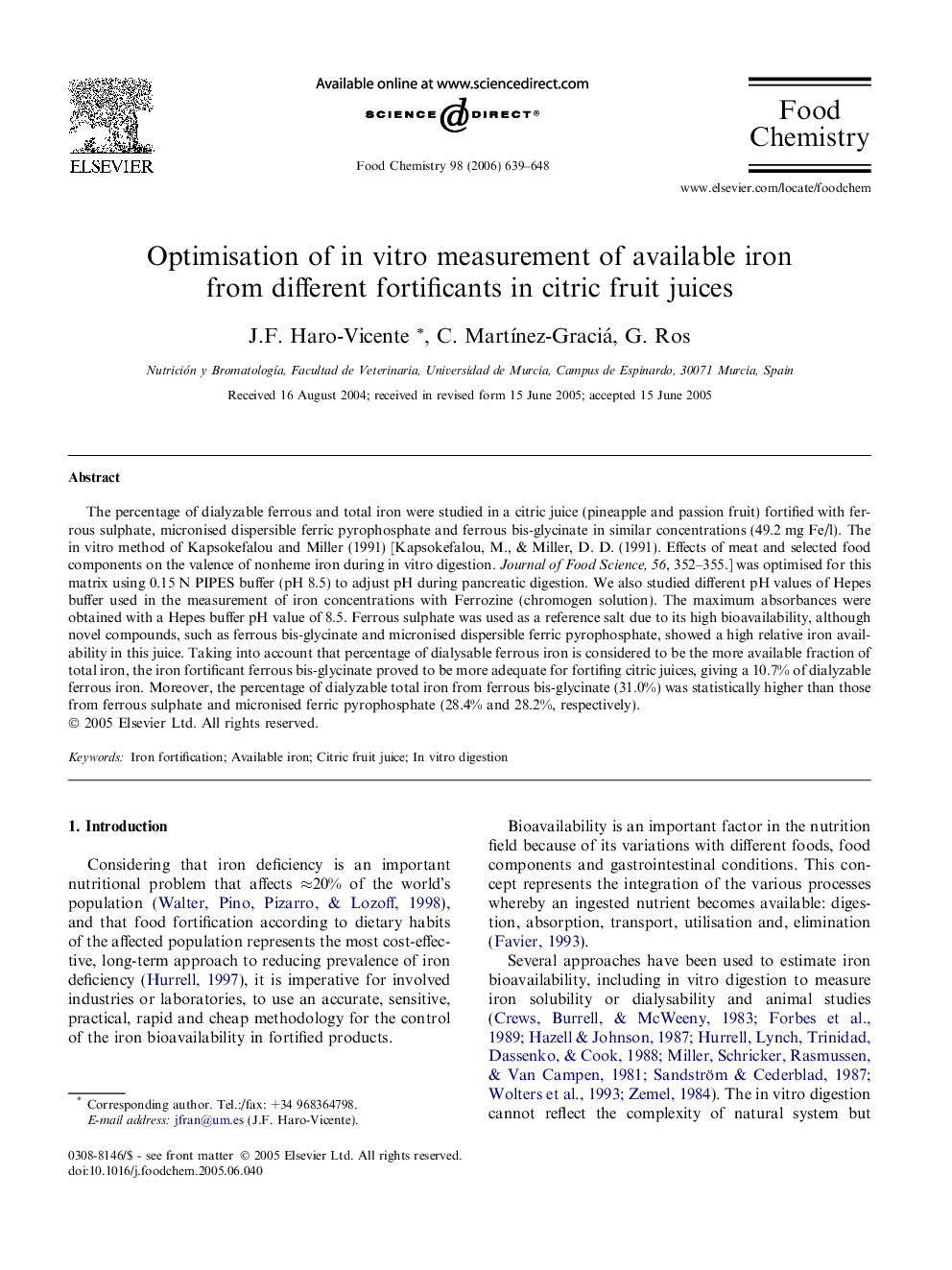| Article ID | Journal | Published Year | Pages | File Type |
|---|---|---|---|---|
| 1188841 | Food Chemistry | 2006 | 10 Pages |
The percentage of dialyzable ferrous and total iron were studied in a citric juice (pineapple and passion fruit) fortified with ferrous sulphate, micronised dispersible ferric pyrophosphate and ferrous bis-glycinate in similar concentrations (49.2 mg Fe/l). The in vitro method of Kapsokefalou and Miller (1991) [Kapsokefalou, M., & Miller, D. D. (1991). Effects of meat and selected food components on the valence of nonheme iron during in vitro digestion. Journal of Food Science, 56, 352–355.] was optimised for this matrix using 0.15 N PIPES buffer (pH 8.5) to adjust pH during pancreatic digestion. We also studied different pH values of Hepes buffer used in the measurement of iron concentrations with Ferrozine (chromogen solution). The maximum absorbances were obtained with a Hepes buffer pH value of 8.5. Ferrous sulphate was used as a reference salt due to its high bioavailability, although novel compounds, such as ferrous bis-glycinate and micronised dispersible ferric pyrophosphate, showed a high relative iron availability in this juice. Taking into account that percentage of dialysable ferrous iron is considered to be the more available fraction of total iron, the iron fortificant ferrous bis-glycinate proved to be more adequate for fortifing citric juices, giving a 10.7% of dialyzable ferrous iron. Moreover, the percentage of dialyzable total iron from ferrous bis-glycinate (31.0%) was statistically higher than those from ferrous sulphate and micronised ferric pyrophosphate (28.4% and 28.2%, respectively).
